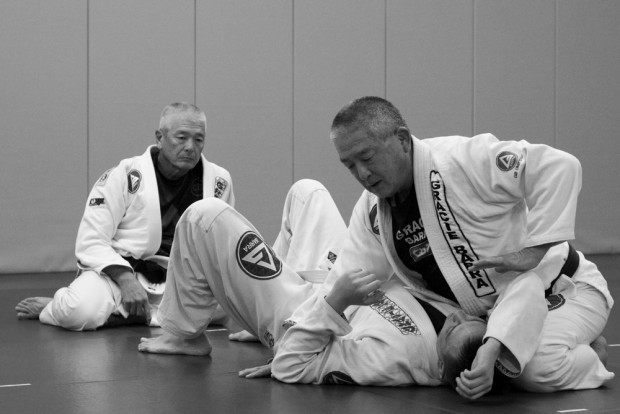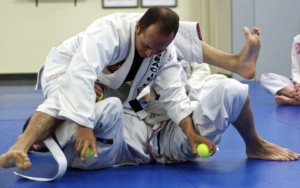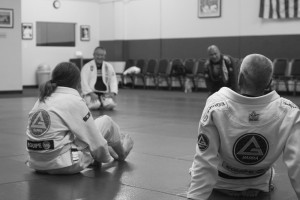Benefits of Slow Roll Classes
Walking into Gracie Barra Chino on a Thursday night is a bit different than any other night. Like most academies, it has a kids class. If I show up early enough I can catch them playing freeze tag or tug o’ war. Part of me wishes we played similar games in the adult class. I jump into the adult class and the live training that follows. I usually pick up one or two new techniques, depending on how much I’m daydreaming at the time. I try to use them during the live training as much as possible but I’m not always successful. That’s Jiu-Jitsu though. Once the typical night of Jiu-Jitsu is over, the special slow roll Jiu-Jitsu class begins.
The slow-roll Jiu-Jitsu class is the brainchild of Professor Bryan Nakagawa. Originally the class was intended to be for those 40 years of age or older. It quickly piqued the interest of younger students and the slow roll class was born. Focusing on proper technique and application, the class is set up a bit differently and less formally than traditional classes.

Professors Bryan and Derek Nakagawa teach the class most nights. Usually starting off with light stretching. The main emphasis of the class is to break down techniques and their applications. They analyze a student’s application of technique and find out why it may not be working for them. Since students have different body types and physical abilities, the technique can be modified or substituted with a variation that works better for the student.
 Though the name of the class is “slow roll” it doesn’t necessary equal slow or light training. The rolls can vary in intensity and in style. For example, students must roll while holding onto tennis balls at times. Many people may be asking why…
Though the name of the class is “slow roll” it doesn’t necessary equal slow or light training. The rolls can vary in intensity and in style. For example, students must roll while holding onto tennis balls at times. Many people may be asking why…
The idea is to de-emphasize the use of the grips. Though important in Jiu-Jitsu, the grips can provide a false sense of security. By holding the tennis balls it forces the student(s) to think about the technique. The student must use proper body movements to pass or evade. This drill can also be useful in learning how to control an opponent using the proper balance of body weight. These types of drills may seem awkward at first, but greatly help develop proper technique.
 The class is about an hour long but goes by quickly. It ends with a question and answer session. Each student goes around and is able to ask the Professors questions unique to a problem they may be having.
The class is about an hour long but goes by quickly. It ends with a question and answer session. Each student goes around and is able to ask the Professors questions unique to a problem they may be having.
Students leave the class with a plethora of new things to consider in their Jiu-Jitsu game. The class exposes areas students need to improve on, while also showing how to correct them. I personally always leave the class feeling more confident about my own Jiu-Jitsu.
Does your academy incorporate a slow roll type class in the curriculum?
Special thanks to Professors Bryan and Derek along with everyone at GB Chino Thursday nights!
Patrick Flores
Gracie Barra Chino
Twitter: patjflores

